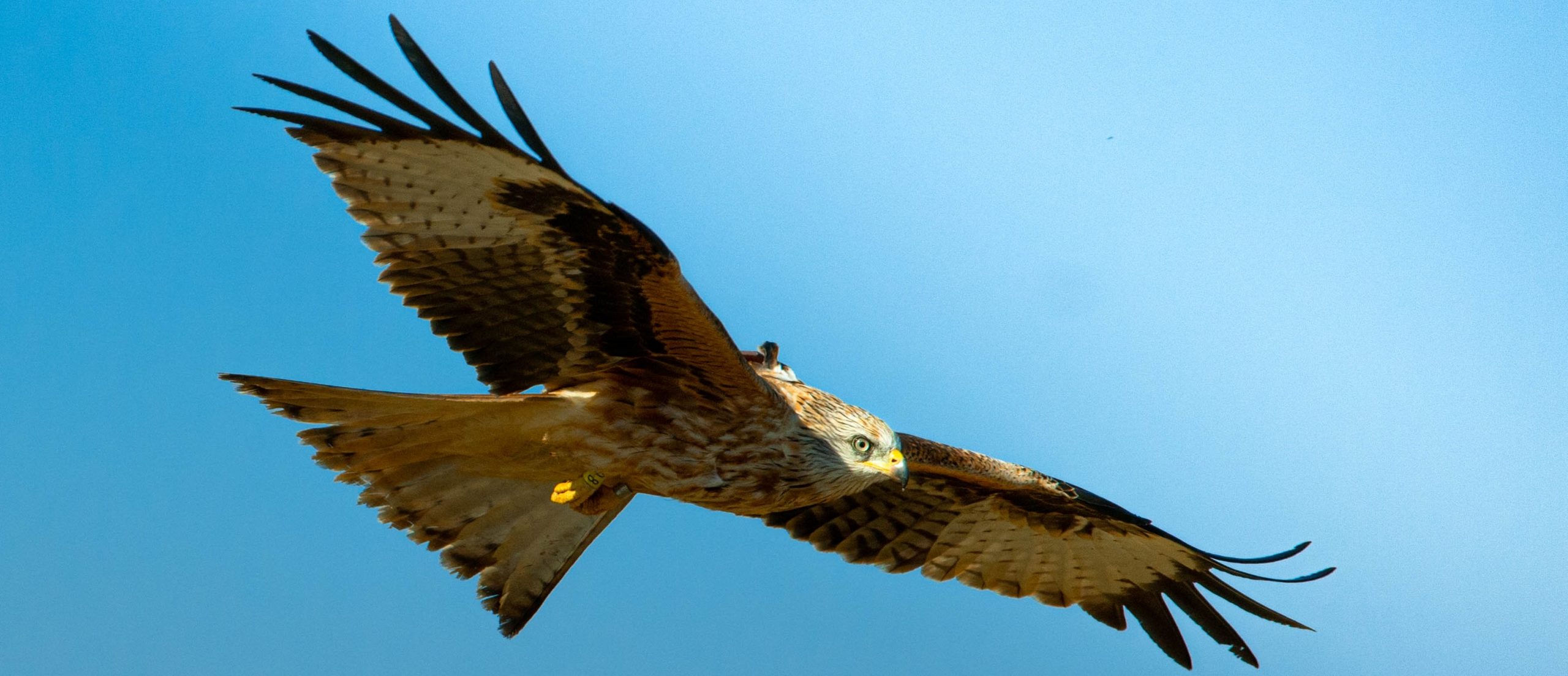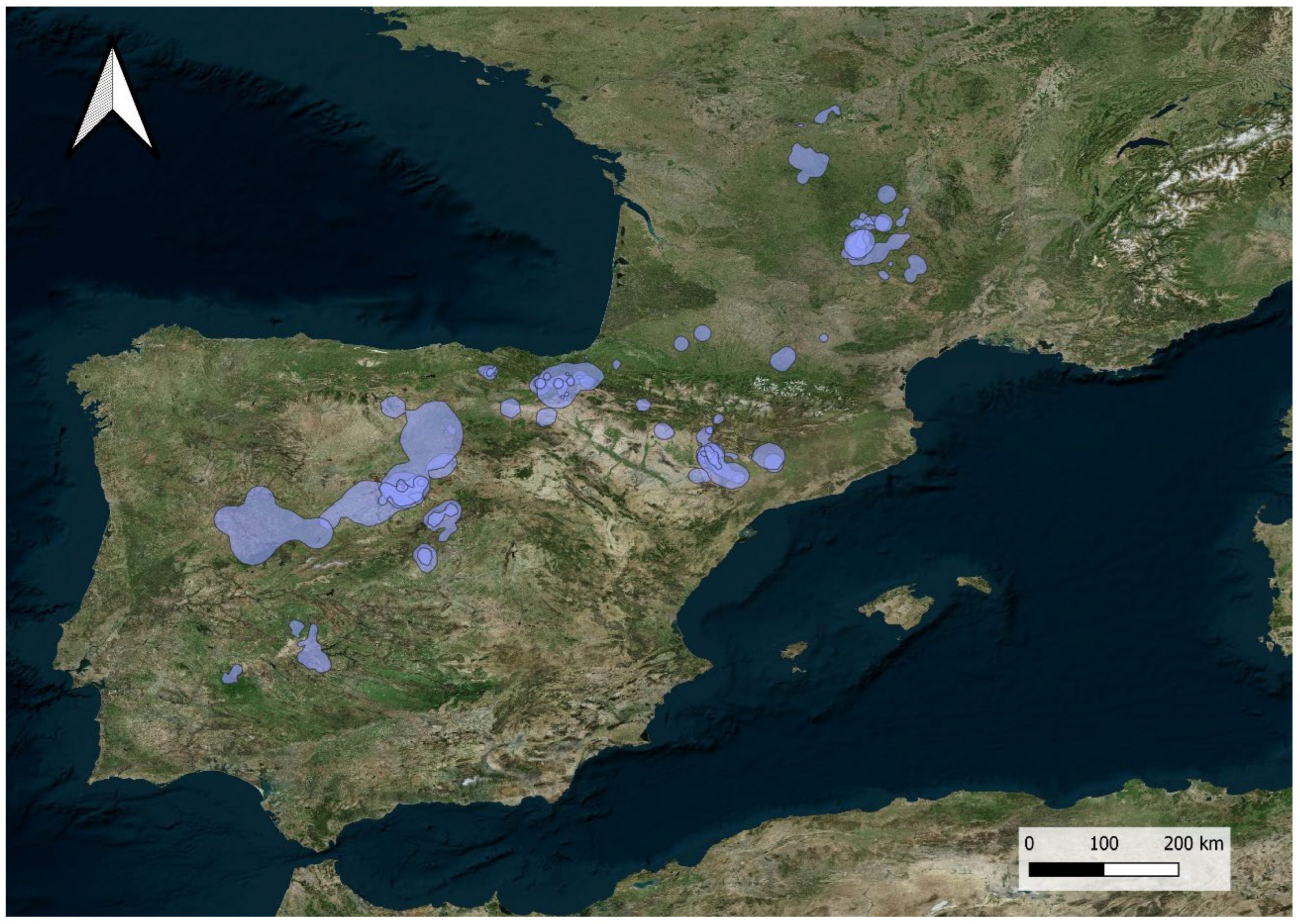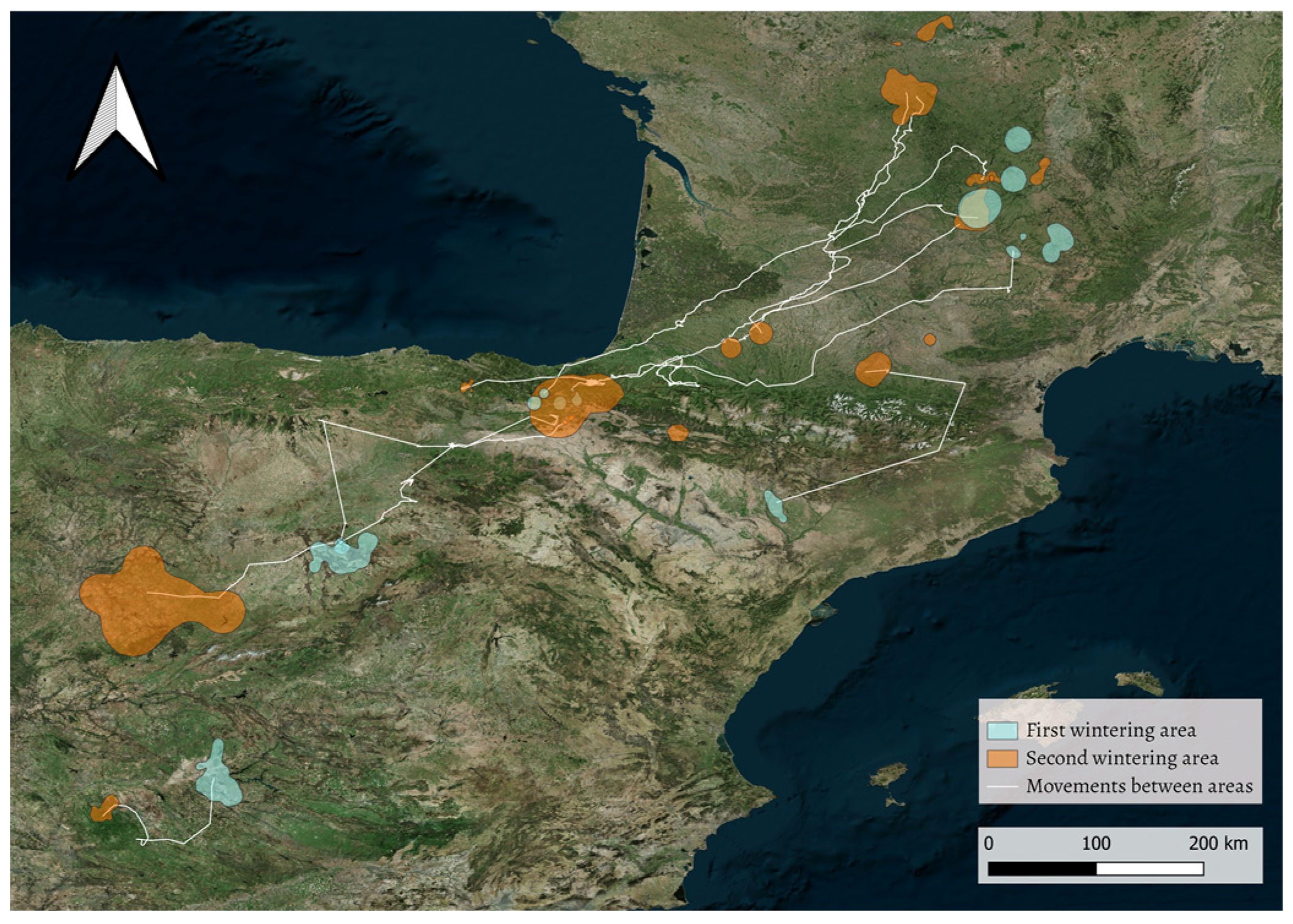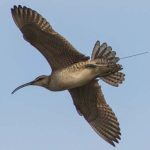← Back
Red Kites wintering in Spain

Red kites are medium-sized partially migratory raptor. They often winter in Spain, but their behaviour there and during those non-breeding periods have not been extensively studied using satellite telemetry. A team used PTTs to understand better this season for those raptors, and consider what will become of them in a context of climate change.
Photo: a red kite (copyright: Vicente Urios)
The red kite (Milvus milvus) is a medium-sized, partially migratory, raptor. Kites usually hunt small animals but they also have scavenging habits. This can be a major problem due to the poisoning of some of the animals found dead.
It is found mostly in Europe, breeding in 17 countries there. In some of them, like Spain, the population is considered “endangered”. In the meantime, Spain seems to be the main winter migration destination, even if more and more red kites are seen in other countries during that season (having migrated there, or being sedentary).
The spatial ecology of the red kites has been mainly studied for the non-breeding season by using field observations. Satellite telemetry would bring new insight about wintering.
Tracking wintering red kites
Forty-four red kites were tagged using GPS/satellite transmitters, including Argos ones, to study their non-breeding seasons in Spain. Data were recorded for 72 wintering events (52 for adults and 20 for immatures.
More info about animal tracking with Argos

Wintering areas (95% Kernel Distribution Estimation) used by the 44 tagged red kites during their non-breeding seasons in Spain and Southern France. (from [García-Macía, et al., 2022])
Results show that the red kites winter in the Spanish provinces of Huesca, Álava, Segovia, Toledo, Burgos and Cáceres, and in southern France. They also demonstrate a wide variability in the time spent in wintering areas – between 32 and 139 days (96 days on average). They mostly went for spring migration to Germany (44 wintering events) and Switzerland (12), but also Poland (8), France (4), Austria (1) and Belgium (1) for breeding or staying for the summer (for immature birds).

Area shifts performed by individuals during their non-breeding seasons. First (blue) and second (orange) wintering areas are represented for each season. The areas are drawn together in the above map, but could represent different years (from [García-Macía, et al., 2022])
About three-quarter of the individuals (34) spent all the period in one area and only one. However, slightly less than a quarter of them (10) moved between two main areas, within Spain or crossing the Pyrenees to France. This did not lead to an increase of the duration of the wintering season, though. This behaviour was not repeated along the years, and those individuals stayed in the same wintering area over all the other years of the tracking. This strategy may be driven by food or habitat resource availability, in association with climate change
Another large variability in the tracked red kites’ behaviours is the size of home ranges, highly variable in size. The largest area is 1000-fold larger than the smallest area. This does not seem to be correlated to sex nor to the number of wintering areas used. The main observed difference is between immatures and adults, with adults having smaller home ranges than immatures. This, observed after the second or third year of life, could indicate a better knowledge of the territory and a better ability to hunt. It is common among raptors, though.
Future studies
The reason for some individuals to shift wintering areas some years (and not others) should also be considered tracking a number of red kites over a long period.
Studies in the future could try to go long-term, to understanding the capability of red kites to respond to climatic changes, and possibly to consider if the red kite is changing its distribution in Europe. For example, how their distribution patterns and wintering parameters are influenced by global warming, especially considering that Spain, its main wintering destination, is at the southern limit of the species’ distribution. The Spanish wintering population may thus shift wintering quarters farther north in the future, to stay within suitable winter conditions.
These long term studies with respect to climate change apply of course to other species of raptors.
Reference and links
- García-Macía, J.; De La Puente, J.; Bermejo-Bermejo, A.; Raab, R.; Urios, V. High Variability and Dual Strategy in the Wintering Red Kites (Milvus milvus). Diversity 2022, 14, 117. https://doi.org/10.3390/d14020117
- research group website: http://web.ua.es/es/zoologia-vertebrados
- its Facebook page http://es-es.facebook.com/vertebradosUA

